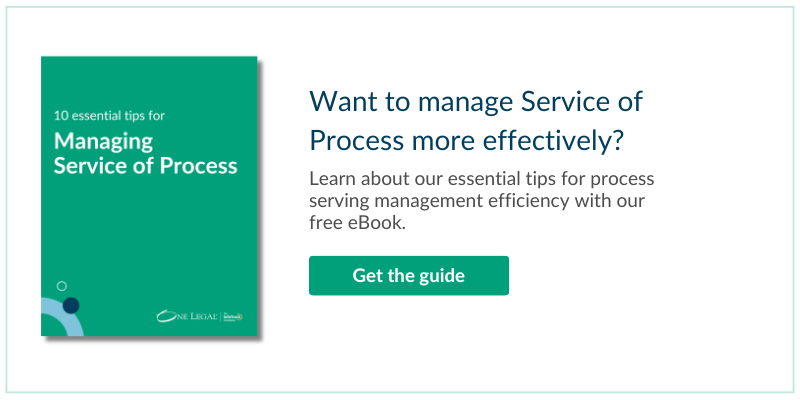With the upheaval caused by the global pandemic, litigation processes across the board have been hustled along or pushed back or altered significantly in some way.
One existing practice that became suddenly much more prevalent was the use of electronic service of documents.
What is Emergency Rule 12?
Electronic service was made mandatory on April 17th in Emergency Rule 12 from California State. This rule states that “A party represented by counsel, who has appeared in an action or proceeding, must accept electronic service of a notice or document that may be served by mail, express mail, overnight delivery, or facsimile transmission.”
Parties must confirm the appropriate email address before serving. And only represented parties are affected by this rule.
Recognizing the potential risk the pandemic had for effecting proper service, making service by electronic means more widespread was one of the first actions taken by the judicial council.
About eService
Still, eService is not a new thing in the legal world. Before Emergency Rule 12, eService was already mandatory where electronic court filing was mandatory. And all parties could opt into accepting eService at any time, regardless of if they were physically or electronically filing.
It makes sense, in a world that is so digital, to begin incorporating more modern ways of receiving documents.
To fully understand the requirements and expectations of eService in California, review California Rule of Court 2.251 in full.
How is eService effected?
Electronic service can be effected one of two ways.
- Electronic transmission – attaching documents to an email and emailing them directly to the other party’s email address.
- Electronic notification – Notifying a party via email that a document has been served and providing a hyperlink at which the served document may be viewed and downloaded.
How does one consent to eService?
Emergency Rule 12 means all represented parties must accept eService. Aside from this rule, for cases filed/initiated on or after January 1, 2019, consent was made by filing/serving a Notice to Consent or agreeing to the terms of service agreement with an EFSP.
Electronic service on a self-represented party is permitted only with the consent of that party, confirmed in writing. The written consent to accept electronic service may be exchanged electronically.
Who manages the eService list?
The party serving the documents is responsible for managing the eService list, neither the court nor One Legal will maintain this list for you.
What about filing the Proof of Service?
Because you are effecting your own service by selecting who you will be eServing, you are required to create and file your own Proof of Service. There is no mandated language for what your Proof of Service needs to say, so you can use the “Proof of Electronic Service” form POS-050/EFS-050 or add the language on that form to your Pleading.
Which documents can be eServed?
Any documents that could have been served by mail before can be electronically served now. This includes subsequent filings and discovery documents. Case initiating documents must still always be personally served.
eService vs. physical service
Despite it being an established process, there remain some misconceptions and confusion around eService and how it differs from traditional personal service of process. Here’s a breakdown of the details and purposes of eService and physical service.
eService
- Electronically providing notice to parties or their attorneys via transmission or electronic notification
- Currently mandatory to accept eService everywhere in California (usually mandatory where eFiling is mandatory)
- Allowed either via electronic transmission or electronic notification
- Service is complete at the time of transmission
Service of process
- Physically providing notice to parties or witnesses that need to be served in person
- A constitutional right of due process that ensures citizens are properly notified of their involvement in legal cases
- Case initiation documents must be personally served (CCP 415.10 – 415.95)
- Service is complete on the day of delivery
To learn more about electronic service with One Legal, visit the eService section of our Support Center.
To learn more about physical service of process with One Legal, visit the service of process section of our Support Center.







